How To Dye A Wool Coat?
Why throw away your old wool coat when you can dye it and give it a new life? Dyeing and customizing a wool coat can make a great costume and help you to stand out. However, dyeing wool fabric isn’t an easy job, and you need to learn all the tips and tricks on how to dye a wool coat properly.
Otherwise, the fabric might shrink or take dye unevenly. To dye a wool coat, you need to wash the fabric and soak it in warm water. Use the right type of dye and mix water in the right proportion, and dip the coat in it.
Slowly raise the temperature and wait for 30 minutes until the fabric takes the dye and almost all the water has turned into steam.
Want a detailed guide to dyeing your wool coat in the right way? Read on!
Difficulties You’ll Face While Dyeing a Wool Coat
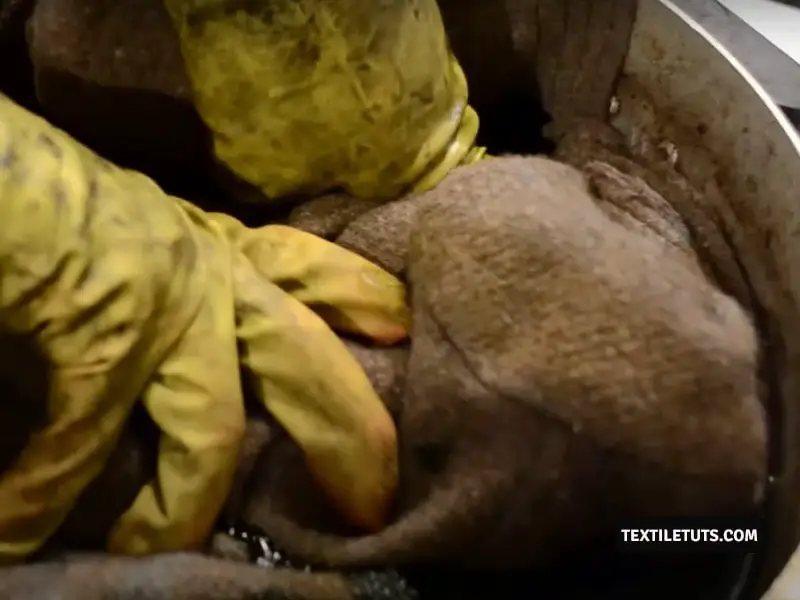
When it comes to dyeing and customizing, wool is definitely not the easiest fabric to work with. The fabric is sensitive and easily affected by chemicals, temperature changes, and moisture.
So, before you go ahead and dip your wool coat in a dye, there are a few things you need to consider first. Below are the potential complications that can arise when you’re dyeing a wool coat-
Fabric Shrinkage
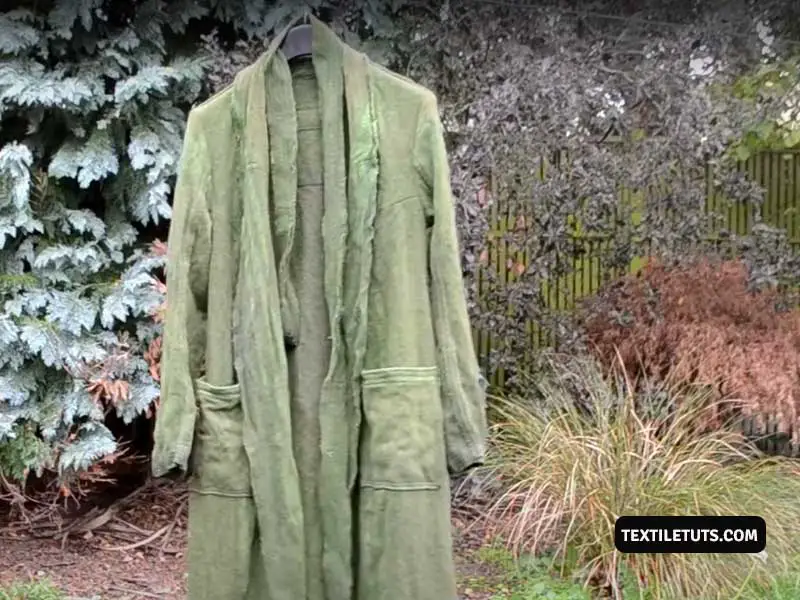
As wool is a highly sensitive fabric, it’s prone to shrinking when exposed to heat and moisture. Both these are involved in the dyeing process.
So, if the coat is not handled carefully while dipping it in the dyed water, it may shrink and become misshapen. As a result, the coat won’t fit you anymore and look tacky.
Chemical Damage
Choosing the right type of dye for your wool coat is a must if you don’t want to damage the fabric. Some clothes are made of 100% natural wool, while others are a mix of natural wool and other synthetic fabrics.
Natural wool fibers contain a protein called keratin. It can easily get affected by harsh chemicals. On the other hand, mixed wool is blended with other fibers such as synthetic fibers, cotton, or linen. The presence of these other fibers offers better protection to the wool during dyeing.
Hence, before you purchase a dye, check out the tag on your coat that mentions whether it’s a fully natural or mixed fabric.
Changes in Texture
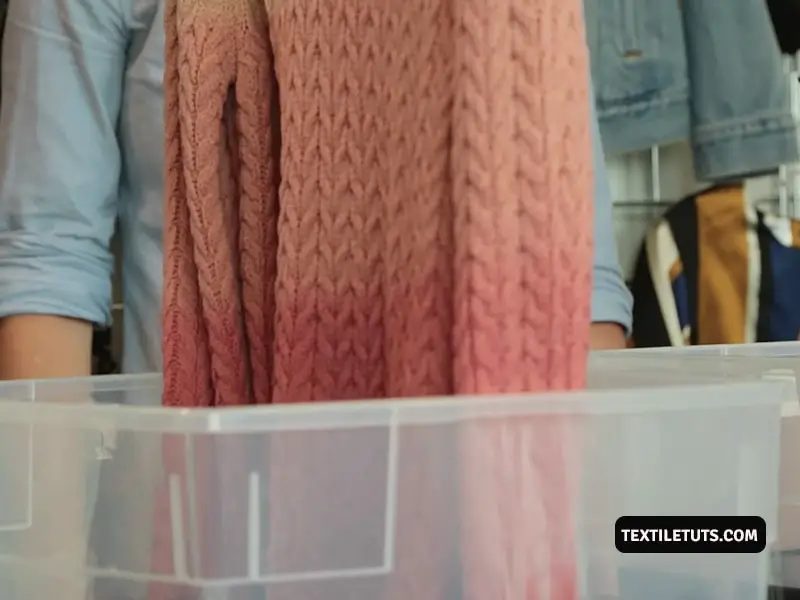
Dyeing can alter the texture of wool, making it feel rough or scratchy. This can be especially problematic if the coat is meant to be worn over bare skin.
Color Bleeding and Uneven Dyeing
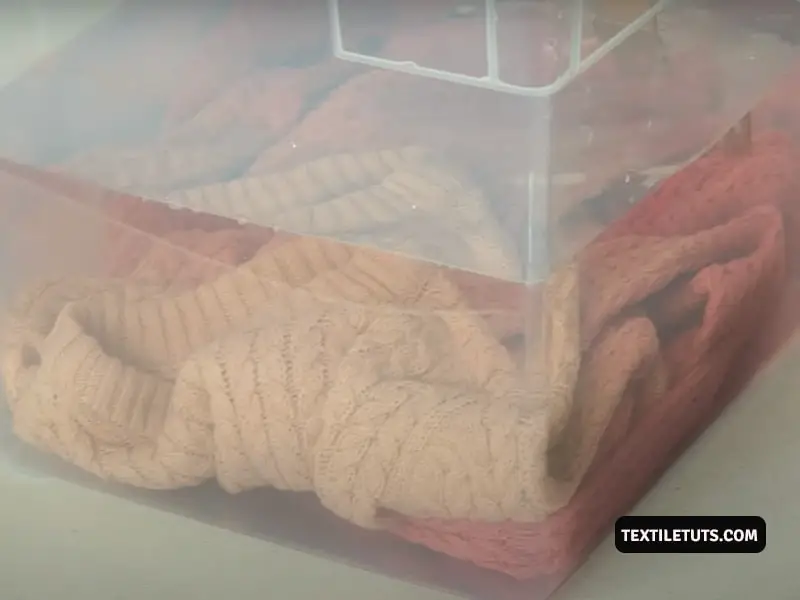
Some dyes are not colorfast, so the color may bleed or fade over time. It can make the coat look faded or discolored after only a few washes.
Apart from that, uneven dyeing is another issue with wool fabrics, as wool fibers aren’t uniform in their ability to absorb dye. Therefore, some areas of the coat may take up more dye than others, resulting in a patchy appearance.
How to Dye Your Wool Coat without Shrinkage? – A Step-by-Step Guide
Now that you know the factors you need to consider before dyeing wool fabric, let’s learn the process. Follow the steps given below, and be sure to check out our pro tips to get the best results.
Step One – Gather the Necessary Items
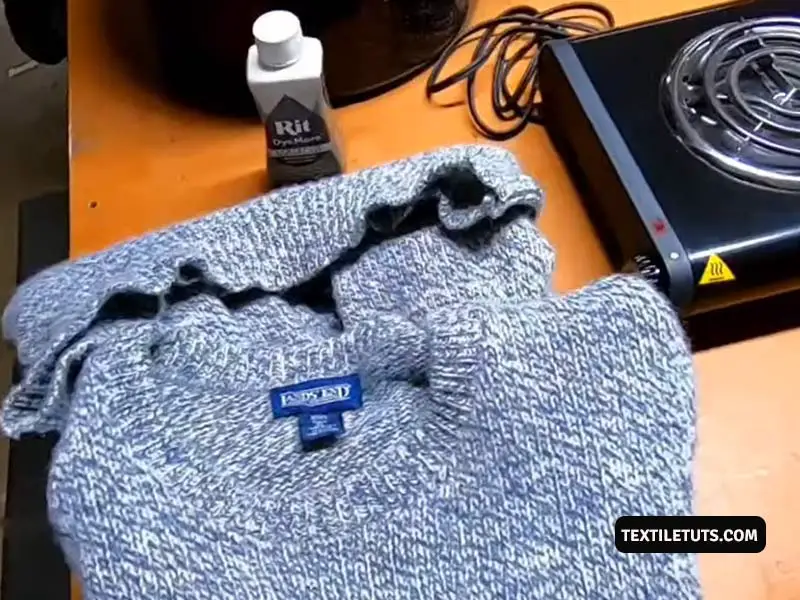
To dye a wool coat, you’ll need the following items:
Got them all? Proceed to the next step.
Step Two – Wash and Soak the Wool Coat
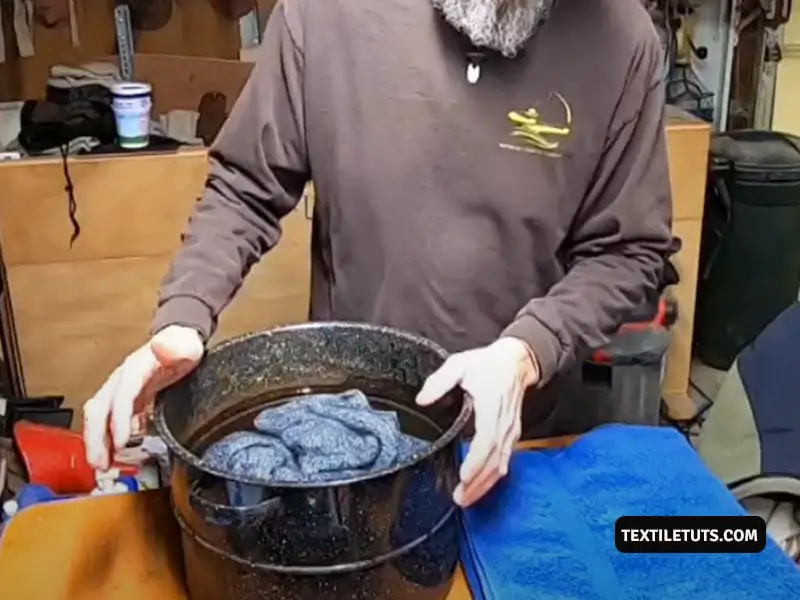
It’s essential to wash the coat properly before dyeing it. Any dirt or debris can result in uneven color patches. Use a wool-safe detergent to wash the coat and rinse it thoroughly. Make sure there are no stains or residues left on the fabric.
Once the coat is clean, you need to soak the coat in water so that it takes the dye well. Use lukewarm water to soak the coat and let it absorb the moisture for at least 15 minutes. After that, press the coat and remove the excess water.
Pro Tip
You can save the excess water to create the dye liquor. Some DIYers suggest it gets better results and prevents shrinkage.
Step Three – Choose the Right Dye
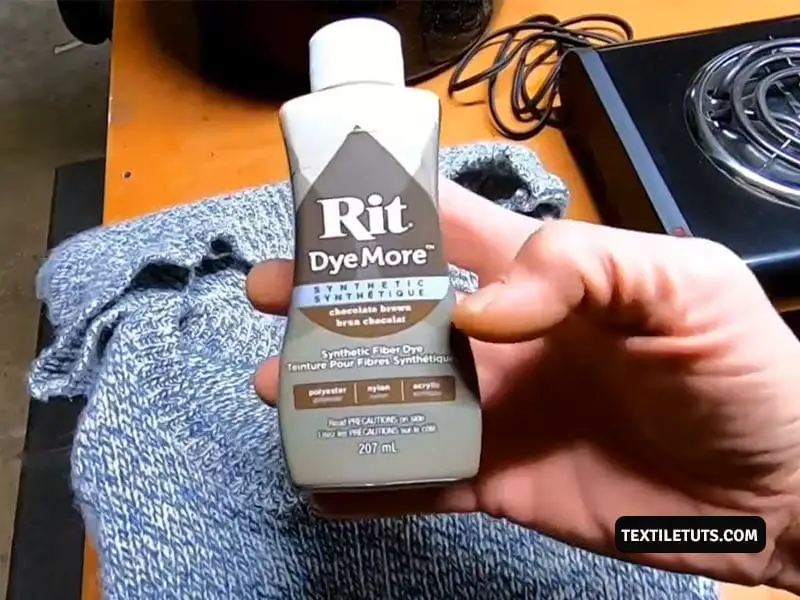
As mentioned, there are different types of wool fabrics, and each needs a specific type of dye. So, select a dye that is suitable for wool fabric. You can find different types of dyes in craft stores, but it’s recommended to use a fiber-reactive dye specifically made for natural fibers such as wool.
According to our research, Rit dye and protein-dye work best for natural fabrics like wool. Pick the correct color and shade that you want to dye the coat.
Step Four – Prepare the Dye Liquor
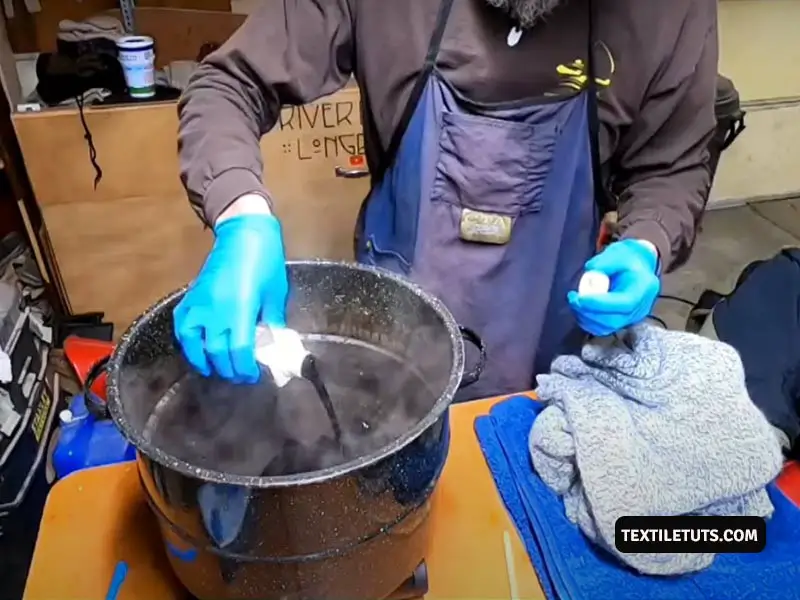
First, wear your hand gloves and face mask to prevent staining your hands and inhaling dye dust. Follow the instructions on the dye package to prepare the dye solution. Typically, you’ll need to mix the dye with warm water and a fixing agent.
Rit manufacturers suggest using two powder dye packets or a single liquid dye for every 2 pounds of fabric weight. Also, you should mix about 4 cups of water with 1 cup of vinegar to make the wool take dye better.
Pro Tip
After preparing the dye liquor, do a color test to check its quality. It’s best if you can apply the dye solution on wool fabric, but a paper towel will also work.
Step Five – Dip the Coat in Dye Liquor
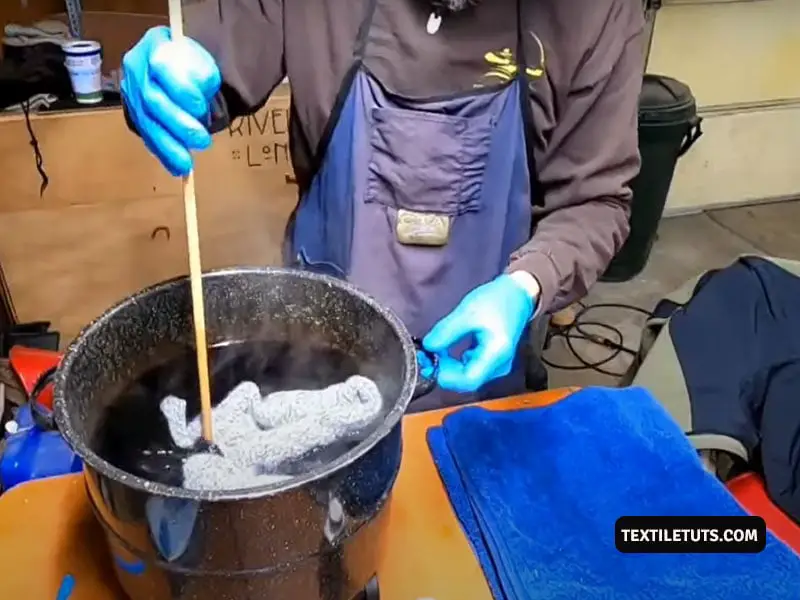
Now, fill a large bowl or dye pot with enough water to cover the coat. Add the prepared dye solution to the pot and stir well. Dip the coat into the pot with the dye bath. Make sure it’s fully submerged in the dye.
Slowly increase the temperature of the dye solution and wait until the water turns into steam. Don’t pour hot water directly into the solution, as it can shrink the wool coat.
Stir the coat occasionally to ensure even dye distribution. The dyeing time will depend on the desired color intensity and the dye manufacturer’s instructions. Generally, it can take between 30 minutes to an hour.
Step Six – Rinse and Dry
Once the coat reaches the desired color, take it out from the bowl and rinse it thoroughly with warm water. Rinse until the water runs clear and there’s no more dye bleeding.
After that, hang the coat on a clothesline or hanger to dry. Avoid direct sunlight, as this can cause fading or discoloration.
– Can the same dyeing process be used for both wool and hemp fabric?
Yes, the same dyeing process can be used for both wool and hemp fabric. However, it’s important to note that while many dyes work well for wool, finding the right dyeing hemp fabric option can be more challenging due to the natural resistance of hemp fibers.
Wrapping Up!
So, now you know how to dye a wool coat. The trick is to use the right dye and increase the temperature slowly to avoid shrinkage.
Follow the steps outlined above to dye your wool coat safely and effectively. Also, check out the manufacturer’s instructions and test the dye on a small, inconspicuous area of the coat before dyeing the entire garment.
With a little patience and attention to detail, you can successfully dye your wool coat and enjoy wearing it for years to come.

